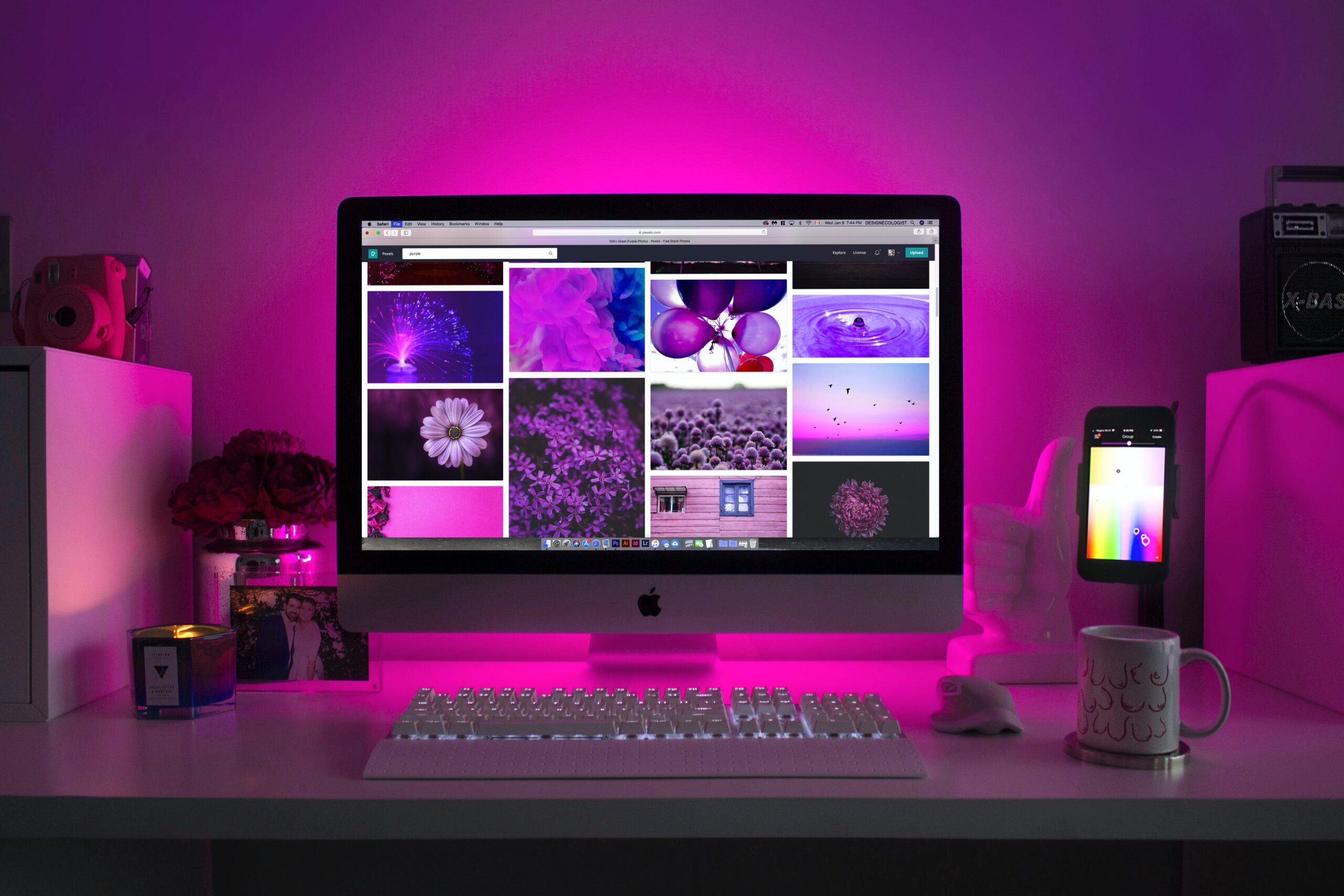Looking for a new smartphone but feeling overwhelmed by the numerous options available in the market? Look no further, because “Your Ultimate Smartphone Buying Guide” is here to help! Packed with valuable insights and practical tips, this comprehensive guide is designed to make your smartphone purchasing journey a breeze. From comparing features and specifications to understanding the latest trends, this guide has got you covered. So, sit back, relax, and get ready to find the perfect smartphone that suits all your needs and preferences.

Operating System
When it comes to operating systems, you have three main options to choose from: iOS, Android, and Windows. Each of these has its advantages and disadvantages, so it’s important to consider your needs and preferences before making a decision.
iOS
iOS is Apple’s proprietary operating system, and it is exclusively available on iPhones. One of the biggest advantages of iOS is its seamless integration with other Apple products, such as MacBooks and iPads. This can make it a great choice if you already own other Apple devices. Additionally, iOS is known for its user-friendly interface and smooth performance.
Android
Android is the most popular operating system in the world, and it is used by a wide range of smartphone manufacturers, including Samsung, Google, and LG. One of the key advantages of Android is its high level of customization. You can personalize your Android phone with widgets, different launchers, and more. Additionally, Android gives you access to the Google Play Store, which has a vast library of apps and games.
Windows
Windows is the operating system developed by Microsoft, and it is available on a range of smartphones, although it is not as widely used as iOS and Android. Windows offers a unique user interface, with a tile-based design that is reminiscent of the Windows desktop experience. It also has tight integration with Microsoft Office, making it a good choice for business users.
Budget
Determining your budget is an important step in the smartphone buying process. Budget smartphones generally offer fewer features and lower performance, but they can still be a great option for those on a tight budget.
Entry-level
Entry-level smartphones are typically the most affordable option, and they are a good choice for those who are new to smartphones or only need basic features. These phones often have smaller screens, lower-resolution cameras, and limited storage capacity. While they may not have all the bells and whistles of more expensive models, entry-level smartphones can still provide a satisfactory user experience for everyday tasks like calls, messaging, and web browsing.
Mid-range
Mid-range smartphones are a step up from entry-level models and offer a good balance of features and price. These phones often have larger screens, better cameras, and more storage capacity. They may also have additional features like fingerprint scanners or face recognition for enhanced security. Mid-range smartphones are a popular choice for those who want a reliable phone with decent performance without breaking the bank.
Flagship
Flagship smartphones are the top-of-the-line models from each manufacturer, and they come with the latest and greatest features. These phones often have high-resolution displays, powerful processors, and advanced camera systems. Flagship smartphones also tend to have larger storage capacities and may offer expandable storage options. While they do come with a higher price tag, flagship smartphones offer the best performance and most cutting-edge technology available.
Size
The size of a smartphone is an important factor to consider, as it can greatly impact your user experience. There are three main size categories to choose from: compact, standard, and phablet.
Compact
Compact smartphones are the smallest option available, and they are a good choice for those who prefer a device that is easy to handle with one hand. These phones typically have screen sizes between 4 to 5 inches diagonally, making them compact and pocket-friendly. While the smaller size may mean sacrificing some screen real estate, compact smartphones can still provide a great user experience for basic tasks.
Standard
Standard-sized smartphones are the most common option and offer a good balance of screen size and comfort. These phones typically have screen sizes between 5 to 6 inches diagonally, making them suitable for most users. Standard-sized smartphones offer a good compromise between portability and screen real estate, making them a popular choice for everyday use.
Phablet
Phablets are the largest smartphones available, and they are designed to provide users with a tablet-like experience. These phones typically have screen sizes larger than 6 inches diagonally, offering plenty of space for watching videos, playing games, and multitasking. While phablets can be more difficult to handle with one hand and may not fit comfortably in all pockets, they can offer a more immersive multimedia experience for those who prioritize screen size.
Display
The display of a smartphone is an important aspect to consider, as it greatly impacts the clarity and quality of the content you view on your device. There are several factors to consider when evaluating smartphone displays, including resolution, size, and type.
Resolution
Resolution refers to the number of pixels that make up the display, and it is typically measured in pixels per inch (PPI). The higher the resolution, the sharper and more detailed the content will appear on the screen. It is generally recommended to choose a smartphone with a resolution of at least 1080p (1920 x 1080 pixels) for a good visual experience. However, flagship smartphones often offer even higher resolutions, such as QHD or 4K, which provide enhanced clarity and detail.
Size
The size of the display greatly impacts the user experience, as it determines the amount of content that can be displayed on the screen. Larger displays are better for tasks like browsing the web, watching videos, and playing games, as they provide a more immersive experience. However, they may also make the device more difficult to handle with one hand and less portable. On the other hand, smaller displays are more compact and easier to handle, but they may sacrifice screen real estate.
Type
There are different types of display technologies used in smartphones, including LCD (Liquid Crystal Display) and AMOLED (Active Matrix Organic Light-Emitting Diode). LCD displays provide good color accuracy and visibility in bright light, while AMOLED displays offer more vibrant colors and deeper blacks, but may be more prone to burn-in over time. Both types have their advantages and disadvantages, so it’s important to consider your priorities when choosing between them.

Camera
The camera has become a key feature of smartphones, and many users prioritize it when making their purchasing decision. When evaluating smartphone cameras, there are several factors to consider, including megapixels, aperture, and additional features.
Megapixels
Megapixels refer to the resolution of the camera sensor, and they determine the level of detail that can be captured in an image. While a higher megapixel count can theoretically result in sharper images, it is not the only factor that determines image quality. Other factors, such as the camera sensor size, lens quality, and image processing algorithms, also play a role. Most smartphones today offer cameras with at least 12 megapixels, which is more than sufficient for everyday use.
Aperture
The aperture of a camera lens determines how much light can enter the sensor, and it is measured in f-stops. A lower f-stop number indicates a larger aperture, which allows more light to enter and results in better low-light performance. Smartphones with wider apertures can capture brighter and clearer images in dimly lit environments. It is generally recommended to choose a smartphone with an aperture of f/1.8 or lower for good low-light performance.
Features
In addition to megapixels and aperture, smartphone cameras often come with a range of additional features that enhance the photography experience. These features may include optical image stabilization (OIS) to reduce blur, portrait mode for bokeh effects, HDR (High Dynamic Range) for more balanced exposures, and various shooting modes for different scenarios. It’s worth considering which features are important to you and whether they align with your photography needs.
Battery Life
Battery life is a crucial aspect to consider when choosing a smartphone, as it determines how long you can use your device before needing to recharge. There are several factors that contribute to a smartphone’s battery life, including capacity, charging options, and battery optimization features.
Capacity
The battery capacity is measured in milliampere-hours (mAh) and indicates the amount of energy the battery can store. Generally, the higher the battery capacity, the longer the battery life. However, it’s important to note that battery life is influenced by a range of factors, including display brightness, app usage, and network connectivity. Most smartphones today offer battery capacities between 3000 to 4000 mAh, which should be sufficient for a full day of moderate usage.
Charging Options
When it comes to charging options, there are two main types to consider: wired charging and wireless charging. Wired charging typically involves using a charging cable and adapter to connect your smartphone to a power source. This method is generally faster than wireless charging and is widely supported by most smartphones. On the other hand, wireless charging allows you to charge your smartphone by simply placing it on a compatible charging pad or stand. While wireless charging may be slower than wired charging, it offers the convenience of not having to deal with cables.
Battery Optimization Features
Many smartphones come with built-in battery optimization features that help extend battery life. These features include power-saving modes, which limit background activity and reduce performance to conserve energy, as well as adaptive battery technology, which intelligently manages app usage to minimize battery drain. It’s worth considering whether a smartphone offers such features and how they align with your usage habits and needs.

Processor
The processor is the brain of a smartphone, and it determines how fast and responsive the device will be. When evaluating smartphone processors, there are several factors to consider, including speed, number of cores, and architecture.
Speed
The speed of a processor is measured in gigahertz (GHz) and indicates how quickly it can perform tasks. A higher clock speed generally indicates a faster processor, although it’s worth noting that other factors, such as the efficiency of the processor architecture and software optimization, also play a role in overall performance. Most flagship smartphones today offer processors with clock speeds between 2.5 to 3.5 GHz, which should provide smooth performance for most tasks.
Number of Cores
The number of cores in a processor determines how many tasks the device can handle simultaneously. Processors can have anywhere from 2 to 8 or more cores, with each core being able to execute instructions independently. More cores generally result in better multitasking and faster performance, especially when running resource-intensive apps or games. It’s worth considering your multitasking needs and the type of apps you frequently use when choosing a smartphone processor.
Architecture
The architecture of a processor refers to the design and organization of its internal components. Different processor architectures offer varying levels of performance and efficiency. The most common smartphone processor architectures are ARM (Advanced RISC Machine) and x86. ARM processors are widely used in most smartphones and offer a good balance of performance and power efficiency. On the other hand, x86 processors are typically found in desktop and laptop computers, and they offer higher performance at the cost of increased power consumption.
Storage
Storage is an essential aspect to consider when choosing a smartphone, as it determines how much data, apps, and media you can store on your device. There are two main types of storage to consider: internal storage and expandable storage.
Internal Storage
Internal storage refers to the built-in memory of the smartphone, and it is where the operating system, apps, and user data are stored. The amount of internal storage available varies between smartphones, with options ranging from 32 to 512 gigabytes (GB) or more. It’s worth considering your storage needs and how much content you plan to store on your device when choosing a smartphone with a suitable amount of internal storage.
Expandable Storage
Most smartphones today offer the option to expand the storage capacity using a microSD card. This allows you to add additional storage space to your device, making it a convenient option for those who need extra room for apps, photos, videos, and other media. It’s worth noting that not all smartphones support expandable storage, so it’s important to check the specifications of the device before making a purchase.

Connectivity
Connectivity is an important aspect to consider when choosing a smartphone, as it determines how you can connect and communicate with other devices and networks. There are several connectivity options to consider, including network support, Wi-Fi, and Bluetooth.
Network Support
Smartphones support different network technologies, including 4G LTE, 5G, and various 2G and 3G bands. It’s important to choose a smartphone that is compatible with the network technology and bands used by your carrier to ensure reliable connectivity. Additionally, some smartphones offer Dual SIM capabilities, allowing you to use two SIM cards simultaneously for increased convenience.
Wi-Fi
Wi-Fi enables your smartphone to connect to wireless networks and access the internet without using mobile data. It’s important to choose a smartphone with support for the latest Wi-Fi standards, such as Wi-Fi 6, for faster and more reliable connections. Additionally, it’s worth considering whether the smartphone supports dual-band Wi-Fi, which allows it to connect to both 2.4 GHz and 5 GHz Wi-Fi networks for improved performance and reduced interference.
Bluetooth
Bluetooth allows your smartphone to connect wirelessly to other Bluetooth-enabled devices, such as headphones, speakers, and smartwatches. When choosing a smartphone, it’s important to consider the Bluetooth version supported by the device, as newer versions offer faster data transfer speeds and improved energy efficiency. Bluetooth 5.0 is the latest version available and offers significant improvements over previous versions, making it a good option for those who frequently use Bluetooth accessories.
Security
Security is a top concern for smartphone users, and there are several security features to consider when choosing a device. These features help protect your personal data and ensure that only authorized individuals can access your smartphone.
Fingerprint Scanner
Many smartphones now come with fingerprint scanners, which allow you to securely unlock your device and authorize payments or app purchases. Fingerprint scanners can either be located on the front or back of the device or integrated into the display itself. It’s worth considering the placement and reliability of the fingerprint scanner when choosing a smartphone.
Face Recognition
Face recognition technology uses the front-facing camera or depth sensors to capture and analyze your facial features, allowing you to unlock your device with a glance. This technology has become increasingly accurate and secure, and it can provide a convenient and fast way to unlock your smartphone. However, it’s worth noting that face recognition may not be as secure as other biometric authentication methods, such as fingerprint scanning.
PIN/Pattern/Password
In addition to biometric authentication methods, smartphones also offer the option to use a PIN, pattern, or password for unlocking the device. These methods provide a high level of security, as they require you to enter a combination of characters to gain access. When choosing a smartphone, it’s important to choose a secure and memorable PIN, pattern, or password and ensure that the device offers adequate protection against unauthorized access attempts.
In conclusion, buying the perfect smartphone involves considering various factors such as the operating system, budget, size, display, camera, battery life, processor, storage, connectivity, and security. Each of these factors plays a crucial role in determining the overall user experience and satisfaction. By carefully evaluating your needs and preferences in each category, you can make an informed decision and find the smartphone that best suits your requirements. Keep in mind that technology is constantly advancing, so it’s worth staying up-to-date with the latest trends and features to ensure that your smartphone can meet your needs for years to come. Happy smartphone shopping!




